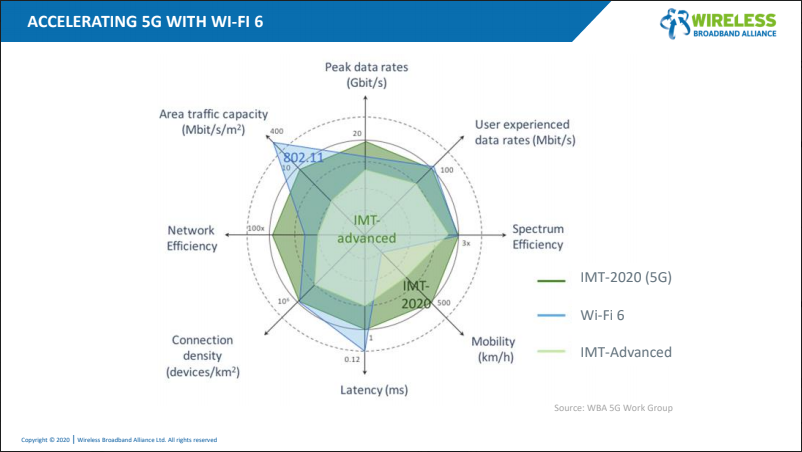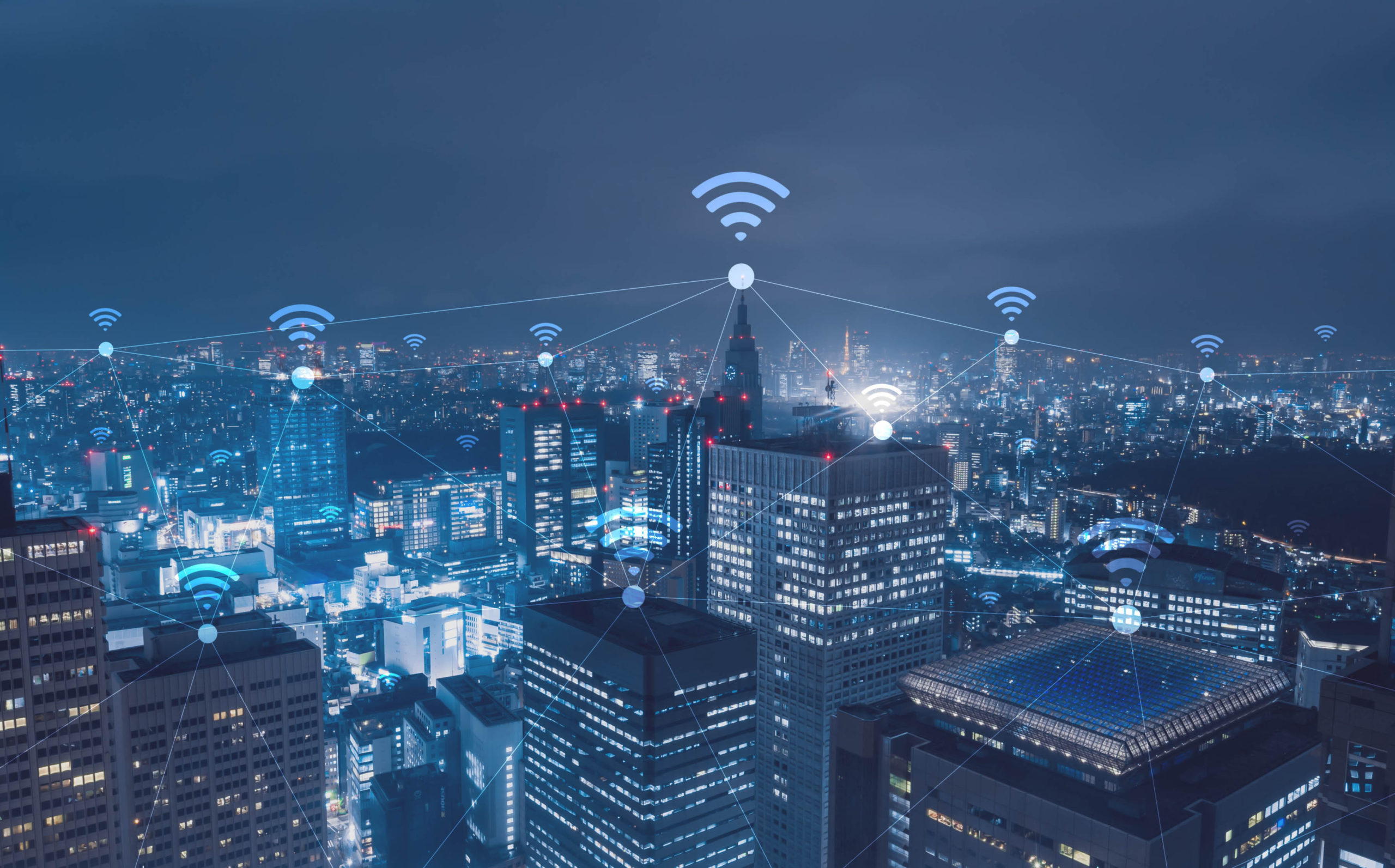The popular phrase goes that this town isn’t big enough for the both of us. With more and more spectrum opening up for Wi-Fi use, there’s going to have to be enough room one way or another, with regard to both Wi-Fi 6 and 5G cellular technology.
6GHz Band Opens Up
Most recently, the Federal Communications Commission (FCC) repurposed 45 MHz in the 5.9GHz band for Wi-Fi. However, it’s a small pittance of spectrum compared to an earlier development in the space, in which the 6GHz band, 1200 MHz worth of spectrum, was released for unlicensed use. Talking to 6GWorld, Abdelaali Chaoub, Associate Professor at the National Institute of Posts and Telecommunications (Morocco), characterised the spectrum as very much in demand.
“We still have medium reach and at the same time we have good capacity. You can have many users because this part of spectrum is very good for capacity aspects,” he said.
Furthermore, the 6GHz band wasn’t simply released in the United States, but in the United Kingdom and South Korea too. Other countries are heading in the same direction. Wireless Broadband Alliance (WBA) CEO Tiago Rodrigues recently spoke to 6GWorld, describing how the Body of European Regulators for Electronic Communications (BEREC) was “very positive about the European Union and European Commission having some news” on that front pretty soon.
Rodrigues also called the band opening up a gigantic opportunity in general for Wi-Fi 6 (Wi-Fi 6E, the latest Wi-Fi standard, in the 6GHz band). Most significantly, it addresses a major problem in terms of congestion.
“There is no way in some situations that you can deploy a proper Wi-Fi network without having too much noise to provide any type of services that can satisfy the customer. So, first of all, it solved all those situations,” he said. “At the same time, at this spectrum, [Wi-Fi 6E] will provide faster speeds, lower latency, and can manage many more devices. So, I foresee multiple applications like large airports or stadiums where the 6E will give a significant improvement on Wi-Fi.”
Rodrigues spoke of other Wi-Fi 6 use cases in reference to a run of successful recent trials in different sectors. They include industrial manufacturing and improving coverage for education services in rural areas. Each of these can theoretically be applications for 5G networks, pointing to some overlap and a need to share spectrum between the two technologies. In fact, of the 1,200 MHz, 850 is going to be split between Wi-Fi and standalone 5G NR-U (5G in unlicensed bands).
Sharing the Spectrum
The WBA has a mission statement to improve Wi-Fi services. Nevertheless, Rodrigues acknowledged the need to co-exist with other technologies in the wireless ecosystem. He readily conceded 5G is better than Wi-Fi 6 for some use cases, and vice versa in others. They can be complementary in other words.
“This shows somehow the vision that we have that Wi-Fi 6 and 5G should work together if there is an opportunity for the carriers,” he said. “You use 5G whenever it makes sense to use it and you use Wi-Fi 6 whenever it makes sense to use it.
“For example, no one is going to cover a highway with Wi-Fi. It doesn’t make sense. That’s a typical outdoor, large macro-cell type of network. When we talk about indoor coverage, you need to be very sure you want to do 5G, because the [infrastructure deployment] costs are quite high. So you have Wi-Fi 6, which is very much more affordable and much easier to deploy and can attract all different types of devices and laptops. All that can be satisfied with Wi-Fi 6.”

As a result, spectrum sharing of some sort is required, with Citizens Broadband Radio Service (CBRS) Spectrum Access System (SAS) administrator Federated Wireless notably submitting an Automated Frequency Controller (AFC) to the FCC as a potential solution. It is expected to be ready for commercial use by the end of 2020. Monica Paolini, founder of consulting firm Senza Fili, described it as a database in a conversation with 6GWorld. She clarified that countries take different approaches.
“There are always incumbents using the spectrum for external long-distance links and you need to make sure that you co-exist with them,” she said. “If you have an indoor device with very little power, then you don’t need anything different, but if you’re outdoors and you want to transmit at a higher power you [must register] in this database and [make] sure you are not interfering with anyone else.”
Rodrigues confirmed the 6GHz spectrum has largely been released for low-powered indoor use. Outdoor is another question, though.
“Outdoor use is still in conversations and, specifically to the U.S., there is a task force where organisations like WBA have been driving the work to make sure we have mechanisms that can safeguard all the incumbents and whatever technology […] they use for their links,” he said, adding that it’s a work in progress.
Co-Existence, Not Competition
Paolini reinforced the notion that it’s a matter of co-existence rather than competition between WiFi, 5G, and other technologies in the unlicensed band. If it were an actual fight, Wi-Fi 6 would be in little danger of losing outright, considering its ubiquity.
“It’s a very good thing to have two fundamentally different technologies with different standardisation processes, because you’re assuring cleaner competition. Just for that, I think we should make sure that Wi-Fi survives, but I don’t think there is a risk of [it fading away], because with Wi-Fi the adoption is so high… Every house has some Wi-Fi if you have a broadband connection. Every house has Wi-Fi, because you have a phone. So it’s really difficult to change to another technology,” she said, referring to 5G as the “new” technology in this case.
“If the new technology has […] some advantage that is absolutely major, sure. There is a chance the new technology will replace the old one, but with 5G and Wi-Fi 6 and then eventually 6G and Wi-Fi 7, there is really no major advantage of 5G […] It’s a difference in the band. If you’re using licensed spectrum, 5G in licensed spectrum vs. Wi-Fi in unlicensed spectrum, clearly you have more control in 5G, but, if you use 5G in unlicensed bands, then you’re having the same issues that Wi-Fi faces,” she added.
Paolini did mention that 6G, once it arrives, will likely be mostly licensed. Still, she envisions the technology being available in unlicensed bands as well. After all, there wouldn’t be a reason for the 3rd Generation Partnership Project (3GPP) to make it unavailable in her opinion.
However, much like researchers are starting to think about 6G even as 5G rolls out, a very similar story is unfolding regarding Wi-Fi 7 and its potential for mass adoption. Carlos Cordeiro, CTO of Wireless Communications at Intel, said as much at the recent Wireless Global Congress event, speaking on the topic of “Next Generation Wi-Fi.”
“The goal is […] to make Wi-Fi address even more challenging use cases, continue improving the delivery of use cases around video streaming, video and voice conferencing, gaming, but also improve on delivery to use cases that require deterministic low latency such as immersive AR and VR,” he said, projecting clients’ data rates will increase from around 2.4 Gbps using Wi-Fi 6 to an estimated 5.5 Gbps with Wi-Fi 7.
“We are really in the midst of Wi-Fi 6 and 6E. That’s the best technology we have available today, but we will make Wi-Fi even better,” he added. “There are great use cases that we’ll be able to address in the future and improve on with the emergence of Wi-Fi 7.”
Feature image courtesy of Vasin Lee (via Shutterstock).







